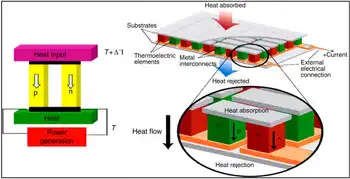Duke reaches settlement on federal lawsuit
JACKSON COUNTY, INDIANA - Duke Energy has reached a settlement agreement with the U.S. Environmental Protection Agency, the U.S. Department of Justice and others on a lawsuit involving one of the companyÂ’s southern Indiana power plants.
As part of the settlement, the company can continue to operate its 560-megawatt Gallagher Station and has the option to either convert two of the units from coal to natural gas or retire the units. Duke Energy has said it currently expects that it will convert the units to gas, but no final decision is required to be made until January 1, 2012. The company also will install additional pollution controls on the stationÂ’s other two units and switch to using lower sulfur fuel at the plant.
The company estimates the cost to convert the units to gas and install additional pollution controls will be approximately $80 million. In addition to resolving litigation, the steps will help the company comply with future federal rules that are anticipated to further limit power plant emissions.
The settlement earmarks approximately $6 million for other environmental projects.
Duke Energy will invest $5 million of those funds in an upgrade to expand the power output of the companyÂ’s 81-megawatt Markland Dam hydroelectric power plant near Vevay. The company had been exploring a 20 percent expansion of the Markland facility, and this settlement facilitates that effort. The expansion will need Indiana Utility Regulatory Commission approval.
“This is a reasonable settlement that resolves some long-standing issues, advances our two-decades long effort to improve air quality in the region, and positions us to comply with increasingly stringent environmental regulations” said Jim Turner, president and chief operating officer of Duke Energy’s Franchised Electric and Gas business. “We will be able to continue using all the units at our Gallagher power plant to serve our customers. The settlement also helps to increase the size and power output of our Indiana hydroelectric plant a very clean source of energy for Indiana.”
The company can continue to operate the units during the natural gas conversion, which will preserve power generation for customers and employee jobs. The natural gas pipeline will be sized to support a combined-cycle gas plant should the company need to add new power generation in 10 or 15 years.
The settlement includes civil penalties of $1.75 million and the surrendering of sulfur dioxide emission allowances during the conversion period of the units from coal to gas. The value of the emission allowances and fuel switch will depend on market prices. As part of the settlement, the government agreed not to pursue further litigation for past Gallagher maintenance projects.
The litigation stems from an effort that began in 1999 when the EPA filed a number of environmental enforcement actions across the utility industry. In this case, the EPA alleged that Cinergy, which merged with Duke Energy in 2006, undertook six power plant upgrades in Indiana and Ohio without obtaining new permits. The government alleged that the companyÂ’s work did not qualify as routine maintenance and that Cinergy should have predicted that the projects would increase emissions at the plants.
In May, a jury found in favor of the company for one project at its Gibson plant near Princeton, two projects at its Beckjord Station in New Richmond, Ohio, and one project at its Gallagher Station in New Albany. The jury ruled against two other Gallagher projects, which prompted the settlement announced. A trial to determine what remedies the company should take at Gallagher had been scheduled for January.
“After more than 10 years of litigation, we are pleased to be resolving our differences with the government with respect to the Gallagher plant,” said Marc Manly, Duke Energy’s chief legal officer. “Although this litigation involves a particular technical issue, what’s important is that between 1998 and 2010, Duke Energy will have invested nearly $5 billion across the five states we serve to substantially reduce emissions from our coal-based power plants. The net result of these investments will be a reduction of sulfur dioxide and nitrogen oxide emissions by approximately 70 percent across Duke Energy’s five-state service area by 2010.”
Related News

Hydro-Quebec won't ask for rate hike next year
MONTREAL - Hydro-Quebec Distribution will not file a rate adjustment application with the province’s energy board this year.
In a statement released on Friday the Crown Corporation said it wants current electricity rates to be maintained for another year, starting April 1. That is consistent with the recently tabled Bill 34, which guarantees lower electricity rates for Quebecers.
The bill also provides a $500 million rebate in 2020, half of which will go to residential customers while $190 million will go to commercial customers and another $60 million to industrial ones.
Hydro-Quebec said the 2020-21 rate freeze will generate savings of nearly $1…





